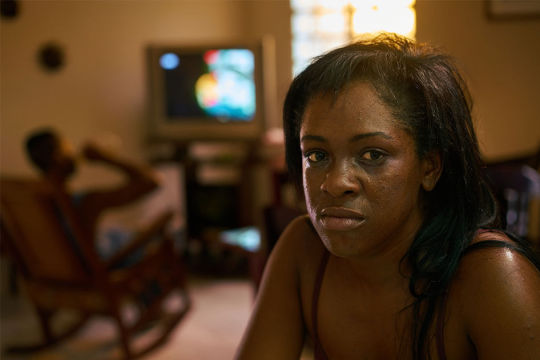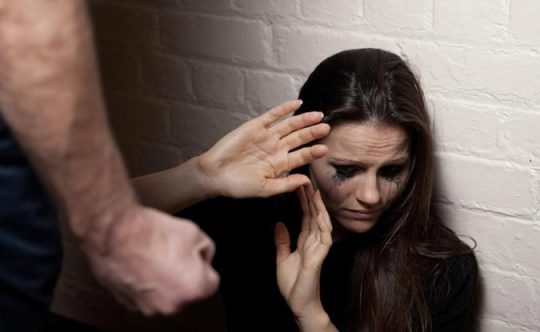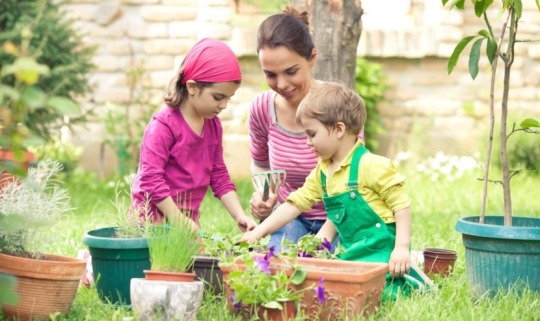We call ourselves Group 5. We are a group of URI students who created this blog to showcase what we are interested in and what we are passionate about. Group 5 team members are Anair Artu, Gonzalez Lorenzo, Dasani Nunez and Rebekah Panenoulath
Don't wanna be here? Send us removal request.
Text
Sex Education (Anair)

Have you ever watched the show sex education? If you did then you know there is a lot of controversy around it. There are many people that think the show can be educational because of the schools that don’t teach about sex education but there are others (mostly parents) that think the show encourages their children to engage in sexual activities. Every time people hear the words, “sex ed” they think they’re getting taught about sex but its more than that. Yes, sex is included but there’s also, emotions involved, consent, healthy and unhealthy relationships, and more. There are many unplanned teen pregnancies, STD’s, and abortions. Without education, the rise in those will keep increasing but we want that to stop. The more we teach, the more it starts to decrease.
In the article written by the department of nursing in the college USC, their main focus is how schools are failing to teach the right topics to their students which makes them lean on to social media information that can be very inaccurate which leads them to make poor decisions when it comes to relationships or their bodies. This article focuses on reasoning and visuals. They talk about comprehensive education rather than just regular sex education, they explain why it’s more beneficial to students because of how it goes into more than just sex or abstinence when other education focuses on one thing. It also includes visuals like bar graphs to back up their reasoning. For instance, in the pie chart, it shows which states are mandated to teach about sex education, which ones are medically accurate, etc. This helps the reader understand why there are so many opinions and sides on the topic because not all are teaching the same things.

https://nursing.usc.edu/blog/americas-sex-education/
In contrast, the article written by the New York Times is viewed differently. Instead of having reasoning and visuals like the first article, it’s more interview-based. The article talks are based on people’s stories. It starts with one story but as you scroll down there are people responding to it from different states voicing their experiences. In the main story the article talks about a guy named Clark. wherein his school he was thought that “People are like tape and once they have sex they’re dirty and can’t have meaningful relationships,”. This kind of education scares people not to do anything and at the same time, they aren’t helping them understand it well either. The way the news article is formatted helps readers relate to the stories being told and feel like they weren’t the only ones going through it. https://www.nytimes.com/2019/04/11/learning/what-has-your-sex-education-been-like.html
In summary, although the two articles were published in different ways they still focused on the one-man thing. Why sex education is important. Even though there are states 39 states that are required to teach this education they’re not doing enough. They would only teach about abstinence or HIV or even some going far enough to show false numbers. The distinction between the articles two helps different people understand the information better whether you like reading stories/ relating to the writer or if you like viewing statistics and reasoning. Overall, sex education is an important topic around the world. It brings up many debates which include if students are old enough to learn about it, if it’s even necessary, many questions around that area. You just have to ask yourself, do you want to be stuck in a position where you don’t know what to do or how to take care of yourself, or do you want to feel informed and confident that you know what you’re getting yourself into.
3 notes
·
View notes
Text
What is America Doing about Sex Trafficking?
Panenoulath, Rebekah

25 million is a large number. Did you know that 25 million people are being sex trafficked? Women, men and children are enslaved to people. They don’t have the human right of being in control of their body. This right was taken away from them by kidnappers, business men and predators. There are probably thousands of companies doing undercover sex trafficking. Millions of people contributing to sex trafficking. This is a huge problem that the whole world needs to recognize. What is the government doing about this?
According to Forbes, the sex trafficking industry makes 150 billion dollars a year. The White House hosted a summit on human trafficking. It was led by Ivanka Trump and many got to voice their opinions on human trafficking. They voiced their harsh criticism on how T-visa workers who have history of running human trafficking. It is clear that the only reason people are being trafficked is the money. Ploris (a non sex trafficking non profit organization) says “ human trafficking is a $150 billion a year global industry and can’t be fully addressed without businesses taking active and effective measures to reduce the potential for exploitation within their own systems.”
While many human trafficking activities remain underground, an increased understanding of how human traffickers use legitimate services has helped companies in various industries begin to crack the business of human trafficking. The bank helped crack cases because people who were being trafficked were opening bank accounts. Traffickers make the people being trafficked open bank accounts so it’s easier to funnel money. The banks noticed the large amounts of cash going into their accounts. In 2014 the Financial Crimes Enforcement Network put out a list of potential indicators for sex trafficking. Banks took notice of this list and started applying and paying attention to these bank accounts. Some signs on the list were, large amounts of money being put in and taken out, multiple accounts under one name and multiple hotel charges.
Speaking of hotels, they also took notice and started taking action. Traffickers often only care if it's a high end hotel or low end hotel. The only thing that matters is what is most convenient for them. Cited red flags for hotel staff include extended stays of customers with few possessions; multiple rooms under one name; someone waits onsite like in the parking lot room is booked with a business card but is paid in cash; excessive foot traffic in and out of rooms. Marriott hotels have trained 500,000 hotel employees and educated them on these red flags. Also Marriott hotel created a program called Global fund to End Modern Slavery to help trafficked survivors.
The healthcare sector is paying attention to individuals who have might have faced sex trafficking. The signs are, mental health issues, drug use and injuries by unsafe working conditions. Health care providers respond more effectively. They are a part of the U.S. Department of Health and Human Services as well as the National Human Trafficking Training and Technical Assistance Center. They also designed an online training course to educate health care providers, social workers, public health professionals, and behavioral health professionals.
The Conversation blog talks about who is purchasing and condoning in sex trafficking. Almost all of us heard about the Jeffery Epstien case. A billionaire who ran a sex trafficking business that had under aged girls trapped. Celia Williamson is the director of Human Trafficking and Social Justice, shes has been researching sex trafficking for 25 years. She says that the customers are usually employed men with enough income to have extra money to pay. These activities cost 15 dollars to 1000 dollars and over. Between cities in America, traffic business runners would make 12,000 dollars to 32,833 dollars a week. Comparing men's success who are customers, they are mostly well educated and unmarried men.
Sex trafficking can happen anywhere. Ohio conducted 115 female enslaved workers and 43 of them were children. 15 to 20 percent of Americans have purchased at least once. A lot of sex trafficking also happens online. Across 15 metropolitan cities in the US, 1 out of 20 men have purchased sexual encounters online. Since the passing of the Trafficking Victims Protection Act there has been progress in protecting enslaved people. Celia Williamson says that sex trafficking is still a major problem in the world and that it needs to be fixed.
Forbes magazine talks about the good that America is doing to help stop sex trafficking. Large companies are contributing to stop tracking by investigation methods of their own. Banks are paying attention to suspicious bank accounts. Hotels are paying attention to who is checking in a room. The article was positive about powerful businesses helping. The Conversation article was about the statistics and data writer Williamson collected. She exposed what types of customers contribute to buying. Also confirming that powerful people and businesses are apart of sex trafficking. Both of the blogs provided information of organizations that are fighting this problem.
When will illegal sex trafficking end? When will people be done being enslaved? It makes me wonder if we can trust the government. America is letting people of higher power get away with condoning in enslaving women, men and children.
6 notes
·
View notes
Text
Female Domestic Abuse(Dasani)
Find resources and programs in your state that provide support for women who have experienced abuse. National Domestic Violence Hotline. You can call the hotline at 800-799-SAFE (7233).
FEMALE DOMESTIC ABUSE:

https://www.womensaid.org.uk/information-support/what-is-domestic-abuse/
What is domestic abuse?
We interpret domestic abuse as an incident or pattern of incidents of controlling, coercive, threatening, degrading, and violent behavior, including sexual violence, in the majority of cases by a partner or ex-partner, but also by a family member or career. It is very common. In most majority of cases it is experienced by women and is carried out by men.
Domestic abuse can include, but is not limited to, the following:
Coercive control (a pattern of intimidation, degradation, isolation, and control with the use or threat of physical or sexual violence)
Psychological and/or emotional abuse
Physical or sexual abuse
Financial or economic abuse
Harassment and stalking
Online or digital abuse
Gender and domestic abuse
Domestic abuse is a gendered crime which is deeply rooted in the societal inequality between men and women. It is a form of gender-based violence, violence “directed against a woman because she is a woman or that affects disproportionately.” Women are more likely than men to experience multiple incidents of abuse, different types of domestic abuse (intimate partner violence, sexual assault, and stalking) and sexual violence. Any woman can experience domestic abuse regardless of race, ethnic or religious group, sexuality, class, or disability, but some women who experience other forms of oppression and discrimination may face further barriers to disclosing abuse and finding help. Domestic abuse exists as part of violence against women and girls; which also includes different forms of family violence such as forced marriage, female genital mutilation and so-called “honor crimes” that are perpetrated primarily by family members, often with multiple perpetrators.
How common is Domestic Abuse in our Society?

We know from our work, and the work of the Women’s Aid Federation of services, that domestic abuse is very common, however, this is often difficult to accurately quantify. Domestic abuse is a largely hidden crime, occurring primarily at home. Women often do not report or disclose domestic abuse to the police and may under-report domestic abuse in surveys, particularly during face-to-face interviews. In addition, prevalence estimates do not consider important context and impact information, for example, whether the violence caused fear, who experienced multiple incidents, and who experienced coercive controlling behavior. When these factors are taken into consideration the gendered nature of domestic abuse becomes clearer.
Addressing Domestic Violence:

https://www.ncbi.nlm.nih.gov/pmc/articles/PMC2784629/#:~:text=Domestic%20violence%20is%20a%20major,depression%20and%20suicide%2C%20amongst%20others.
In contrast to all the negative outcomes that domestic violence leads to; There is still a positive and hopeful side that includes various solutions that lead to an effective response to violence which must be multi-sectoral involving and addressing the immediate practical needs of women experiencing abuse; providing long-term follow-up and assistance; and focusing on changing those cultural norms, attitudes and legal provisions that promote the acceptance of and even encourage violence against women, and undermine women's enjoyment of their full human rights and freedoms.
The health sector has a unique potential to deal with violence against women, particularly through reproductive health services, which most women will access at some point in their lives. However, this potential is far from being realized. Few doctors, nurses, or other health personnel have the awareness and the training to identify violence as the underlying cause of women's health problems.
The health sector can play a vital role in preventing violence against women, helping to identify abuse early, providing victims with the necessary treatment, and referring women to appropriate care. Health services must be places where women feel safe, are treated with respect, are not stigmatized, and where they can receive quality, informed support. A comprehensive health sector response to the problem is needed, addressing the reluctance of abused women to seek help.
Resources by state on violence against women:
https://www.womenshealth.gov/relationships-and-safety/get-help/state-resources
5 notes
·
View notes
Text
Farming COVID-19(Lorenzo)
Every year is a new start, this year of 2020; there is a conflict to the public. It was the unexpected of the most shocking to come upon nations, races, and cultures. The start of January seemed to have people wondering. How will this year be? What changes could happen throughout this year? A sudden outbreak occurred globally. The Corona-virus, because of the pandemic, there were changes, and these changes cause different perspectives of people living. For example, employments, stock markets, food, jobs, etc. A new rule to slow down the virus from spreading. But still, there was the survival of people. One common resource that most people need is being healthy. Before COVID-19, even people buy vegetables and fruits for families to be healthy. However, that has changed. Certain people have different beliefs that are growing foods at home is much more resourceful and sanitary than the ones built on farms. It is beneficial because it is a quicker and low risk of getting the virus or that fruits and vegetables are slow to progress to export fruits and vegetables into stores. But foods in markets thought otherwise, but it was the only way to keep a healthy environment among people.
In contrast to growing food at home, it is most beneficial in three ways than the grains in stores. First, growing fruits and vegetables is much healthier because when you plant, you know exactly what is going on based on seeds, planting, gardening, etc. The process of having a neutral and natural garden. You are aware of the challenges of growing your vegetables and fruits. Not only is it healthier but also great for your environment, this will help families receive the right amount of vitamins and minerals—secondly, physical activity. When you are going out to get the utilities for gardening, you are getting the exercise, sunshine, and fresh air from your environment. Not only is your diet large but your body too. Moving your body Keeps it healthy, active, and a more robust immune system against bacteria. The third is financial savings. Money is one of the essential resources of ourselves to purchase needs in society. Having an edible garden, you find yourself spending less money at a grocery store. Also, because of the pandemic, money is one of the hardest things to have in hand. People do not have jobs, nor do they have been accepted in unemployment money.
https://www.kellogggarden.com/blog/growing/benefits-of-growing-your-own-food/

In contrast to grocery shopping, it is a necessity during this pandemic. People exporting foods must be aware that they are not exposed to the virus and that it is person to person spread, not food. However, because many people must buy food, it will take a while to modify operations for all the foods in order. That means change time and hours to restock foods. There are regulations of whom should receive first, for example, the seniors or high risks individuals. Throughout this process, it is strictly prohibited to enter a store without a mask. It is mandatory to keep a distance of 6 feet apart and have wipes for yourself when using other things from the store, such as carts, picking objects, etc. When it comes to food in-store, the food is processed with chemicals. Because of COVID-19 and the safety of families and people, the fruits and vegetables must be washed carefully and hands from public exposure. Financially, the cost of food is expensive, and not all people have the money to purchase. Specific jobs are closed to slow down the spread.
https://www.fda.gov/food/food-safety-during-emergencies/shopping-food-during-covid-19-pandemic-information-consumers

As of now, the regulations of COVID-19 are still being managed and under control than before. Most of the foods are vitamins and mineral supplements so that people do not have a chance of being infected as a balance of the differences, both food markets, and home gardening, both supply by keeping everyone safe even though it is between themselves. But the most crucial idea is slowing down the virus from spreading and become healthy. There will be positive outcomes from the pandemic, such as less air pollution, clean rivers, and the environment itself is less contaminated but factories.
6 notes
·
View notes